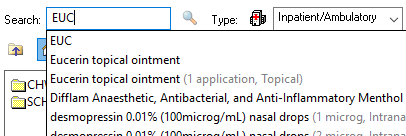Pathology tests can be ordered via the Orders page, or via the Common Orders section in Paediatric View.
Important:
- Orders are Encounter specific. Orders will NOT be processed properly if attached to the wrong Encounter. To lessen the chance of choosing the wrong Encounter, select the patient from a ward list, scheduling list or inpatient medical specialty list, to open their PowerChart.
- Decision Support messages/alerts may pop up during Ordering. These are provided for some orders to help guide clinicians in appropriate ordering. Please review and take the appropriate action to ensure patient safety and correct ordering.
- See the Orders - Overview Quickstart to know more about the Orders page in PowerChart.
Ordering a Pathology test via the Orders page
1. Click on Orders on the side menu of PowerChart
![]()
2. Click on the +Add button
3. In the Add order window, Search for the Pathology test (see the Orders - Search Tips Quickstart for more detail)

4. Enter the patient's Clinical History as required

5. Click OK
6. Click Done to close the Add order window ![]()
7. Click on the Pathology test name to see the order details on the Scratchpad (bottom half of the screen)
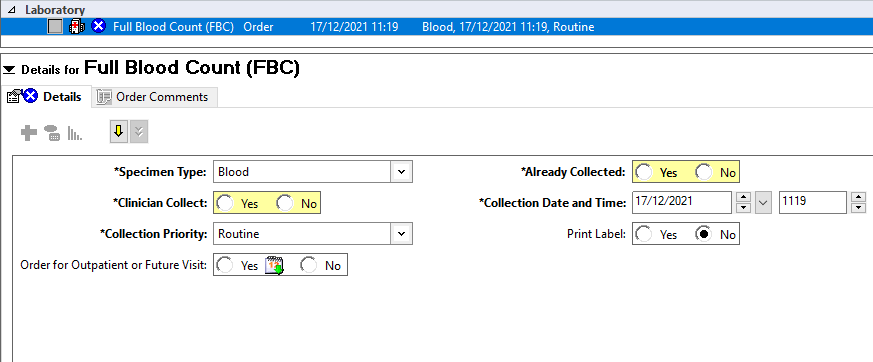
6. Enter details accordingly - mandatory fields will be yellow
- Clinician Collect "Yes" will require the clinician such as the nurse to collect the specimen
- Clinician Collect "No" will require a Pathology staff member to collect the specimen
- Set the Collection Date and Time to the approximate date and time that you would like the specimen collected, especially when placing orders that aren’t collected immediately (this will reduce the orders flagging as overdue on the nurses' Care Compass list).
- Order for Outpatient or Future Visit refers to orders for collection on an outpatient visit or different visit, NOT a different day on the same visit.
- It is important to order pathology for the right time and day for future visit orders. This is vital to review if the patient is going to be discharged, as orders listed for inpatients will delete at discharge unless placed as future visit orders.
7. Click Sign and enter your password. ![]()
Ordering multiple tests at once via Orders page
You can keep the Add order window open and continue to Search for orders one after the other, to order multiple orders at once.
Example scenario: Ordering FBC and EUC at once
1. Click +Add ![]()
2. The Add order window appears. Search for the first pathology test, e.g. FBC
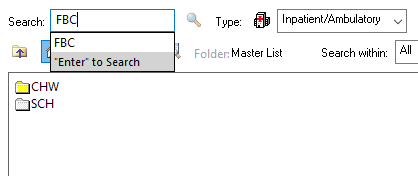
2. Enter the patient's Clinical History as required
3. From the Add order window which remains open, Search the next pathology test, e.g. EUC, and click on it
- You can order as many tests as you like from the Add order window
4. Once you have Searched and clicked on the tests you want, click the Done button to close the Add order window ![]()
5. You will then see all the tests listed at once on the Orders page. Click on each test to see its details on the Scratchpad (bottom half of the screen)

- Alternatively, multiple orders can be selected at this point, to allow you to complete the Scratchpad details for all orders at once. This should be done only if all orders have the same details applicable.
6. To select multiple orders:
- Click on an Order and hold down the [Ctrl] key, then click on the remaining orders OR
- Click on an order, hold the left mouse button down, and drag over the other orders to highlight them
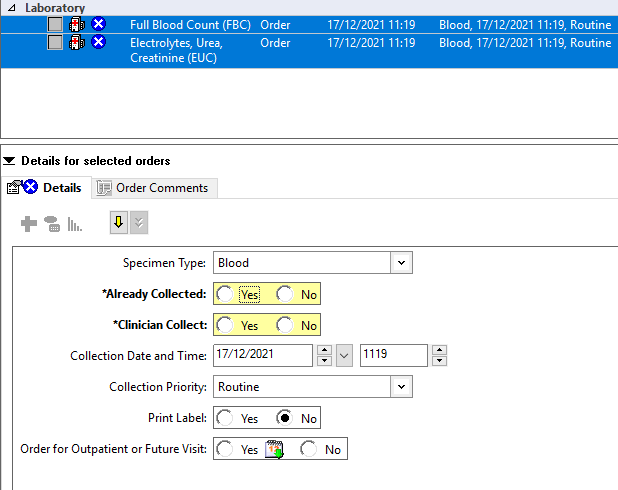
7. Enter the details in the Scratchpad - note that whatever you enter will automatically be applied to all selected orders at once, as seen in the order sentence
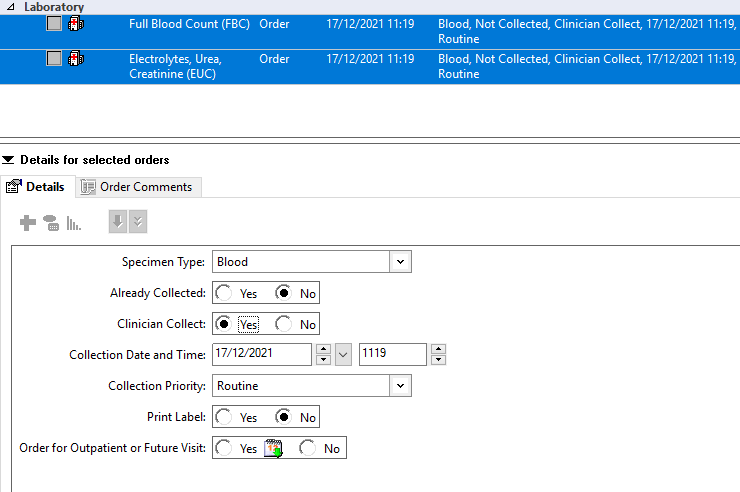
8. Click Sign once order details have been completed ![]() and enter your password.
and enter your password.
Ordering a Pathology test via the Common Orders section in Paediatric View
1. Click on Paediatric View on the side menu of PowerChart
2. Click on Common Orders
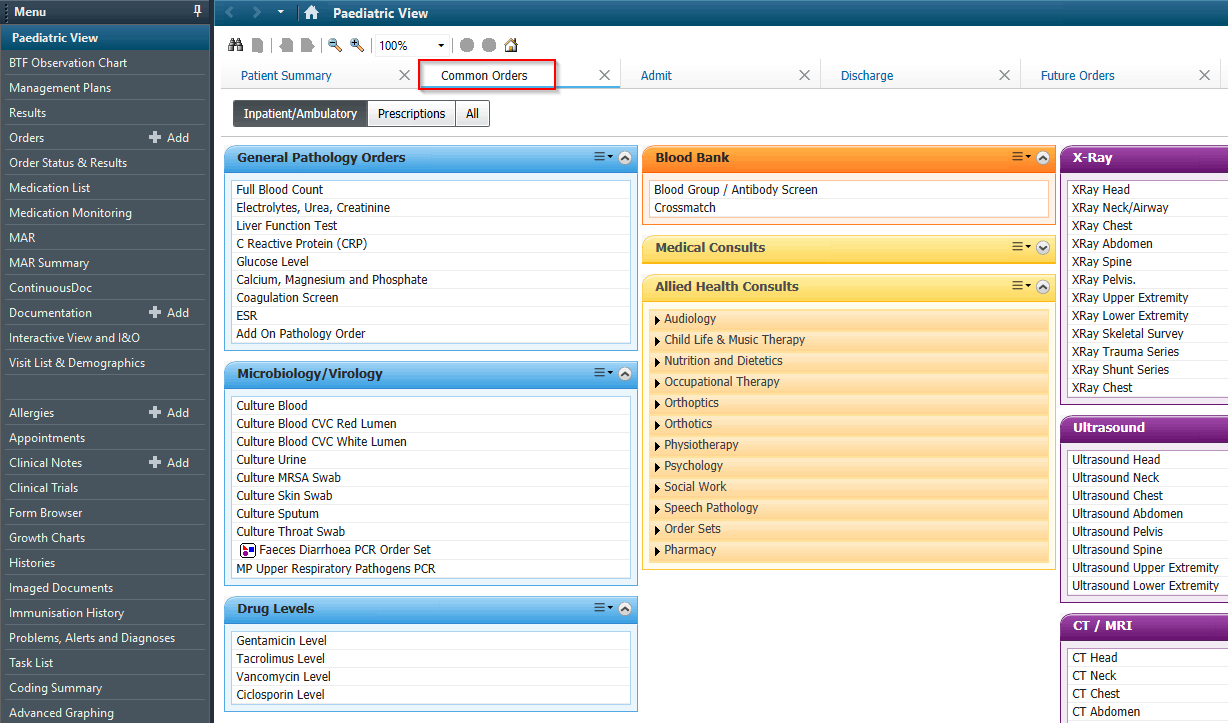
3. Locate the General Pathology Orders widget, which shows a list of Pathology tests
4. Click on the test to be ordered, and enter the patient's Clinical History as required
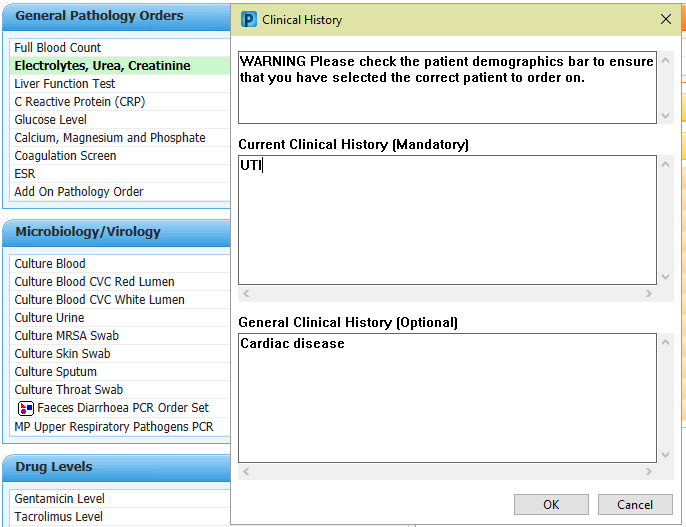
5. Click OK
6. Click on Orders on the side menu of PowerChart
![]()
7. Click on the Pathology test name to see the order details on the Scratchpad (bottom half of the screen).
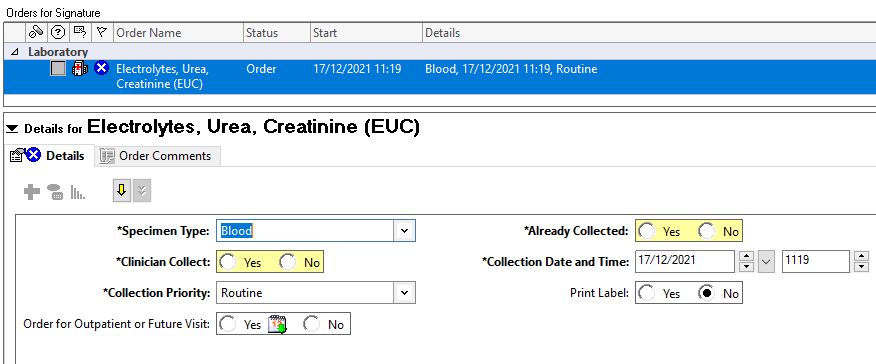
8. Enter details accordingly - mandatory fields will be yellow
- Clinician Collect "Yes" will require the clinician such as the nurse to collect the specimen
- Clinician Collect "No" will require a Pathology staff member to collect the specimen
- Set the Collection Date and Time to the approximate date and time that you would like the specimen collected, especially when placing orders that aren’t collected immediately (this will reduce the orders flagging as overdue on the nurses' Care Compass list).
- Order for Outpatient or Future Visit refers to orders for collection on an outpatient visit or different visit, NOT a different day on the same visit.
- It is important to order pathology for the right time and day for future visit orders. This is vital to review if the patient is going to be discharged, as orders listed for inpatients will delete at discharge unless placed as future visit orders.
9. Click Sign and enter your password. ![]()
Viewing Ordered Pathology tests
In the Orders page, the View can be customised to more easily review the order Status.
1. Click on Customize View

2. Select Group orders by: Date from the drop down menu

3. Click OK.
4. Refer to the Status column

- “In-Lab” results will not display on the Results page (side menu of PowerChart), but you can see the In-Lab status on the Orders page.
Histopathology/Cytology Requests
Histopathology and Cytology specimens are exempt from electronic ordering. All requests for Histopathology and Cytology tests should be made on Pathology Request Forms (Inpatient or Outpatient, where applicable). This is to ensure the laboratory staff receive all the clinical information required to make a diagnosis.
Label information
To assist the collection and labelling of Pathology samples, specimen labels are produced indicating the container type for each ordered test/specimen. The volume of the sample of blood, urine, CSF, etc. have not changed, and can be calculated using the following link to the Blood Collection Guide on the intranet http://chw.schn.health.nsw.gov.au/ou/biochemistry/resources/collection_manual.pdf
